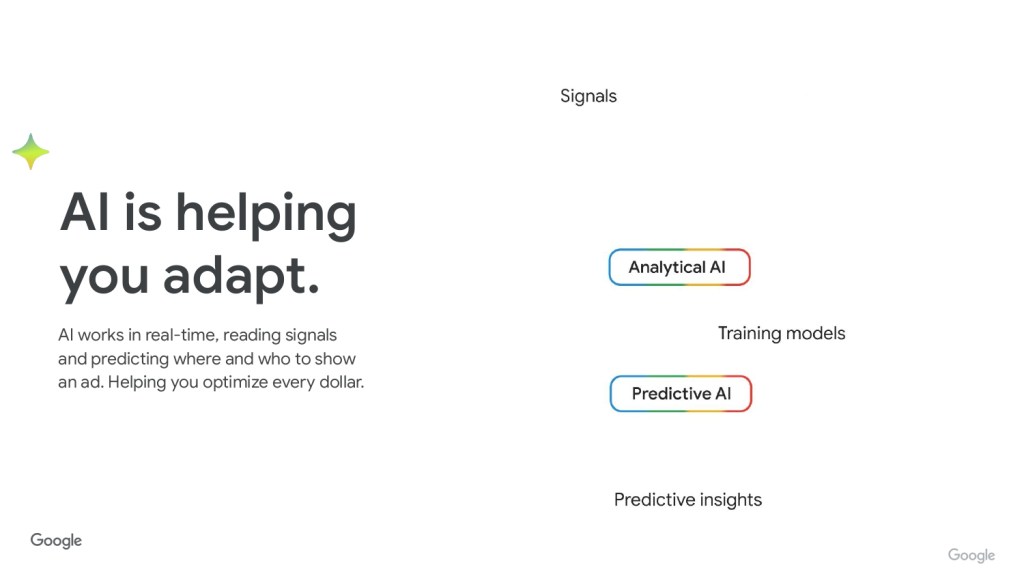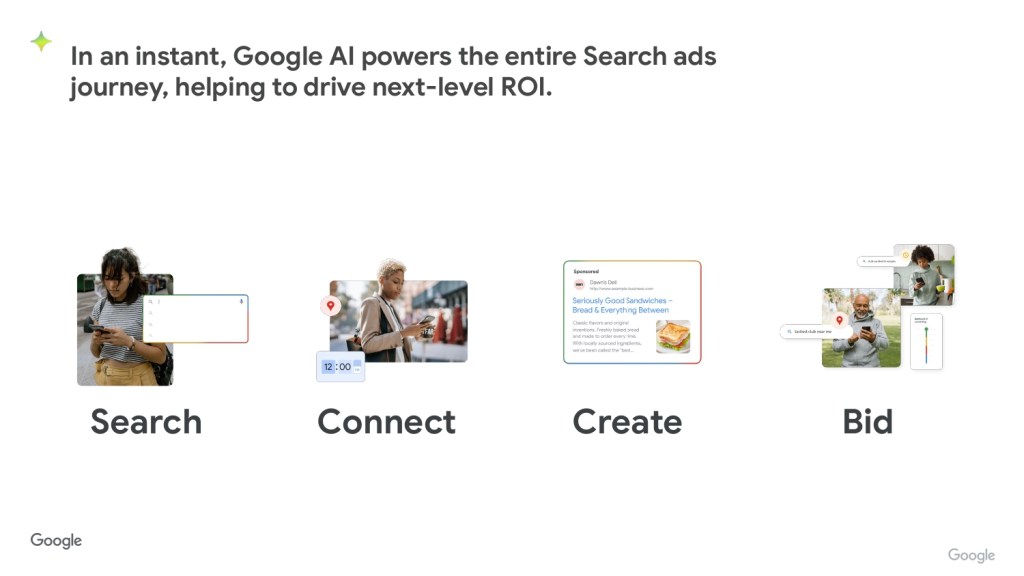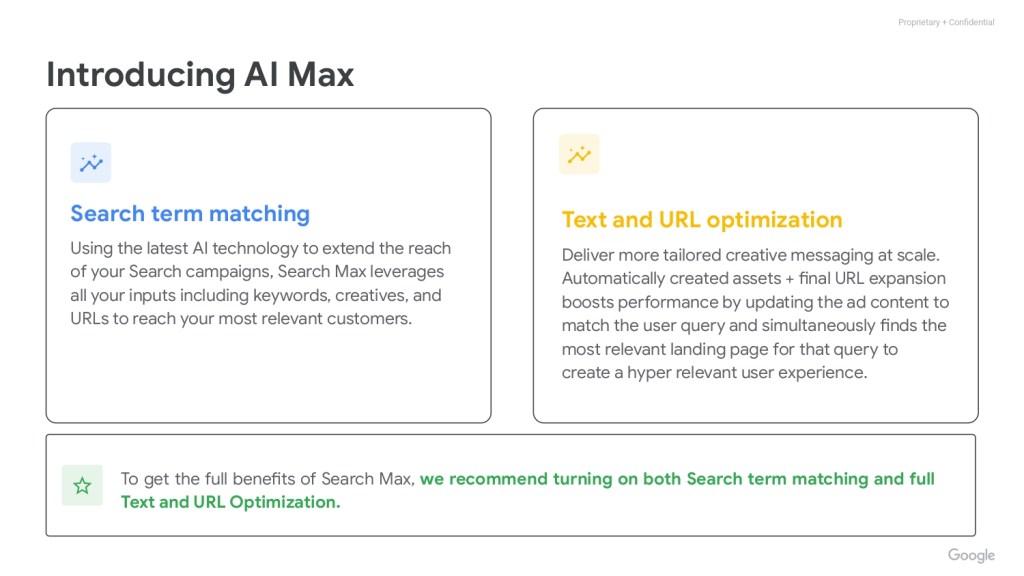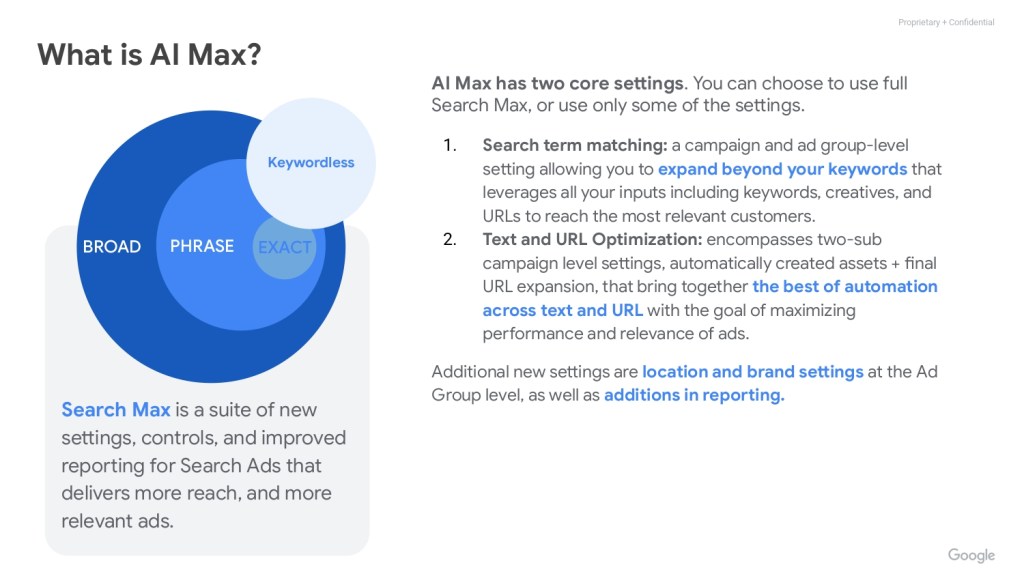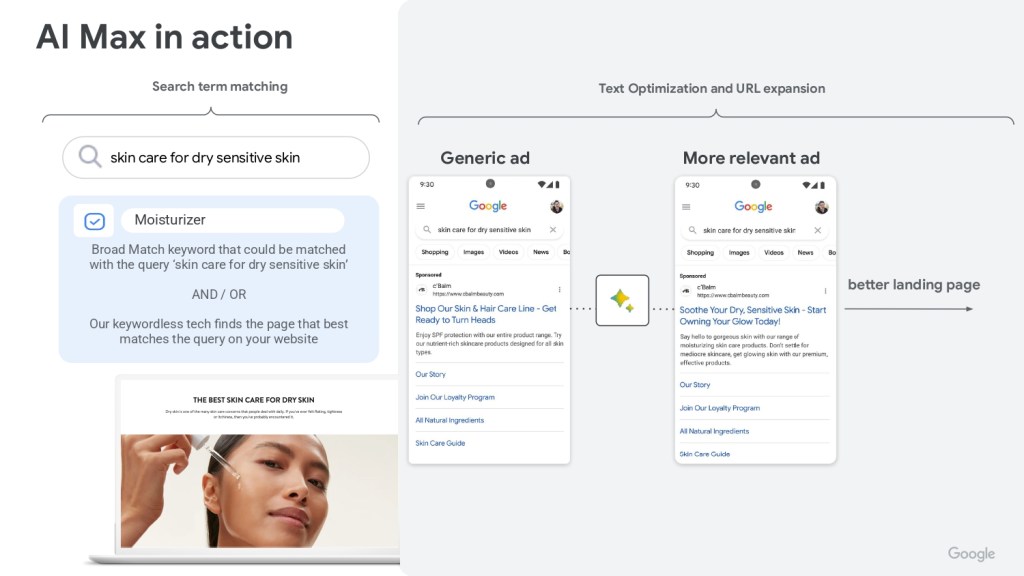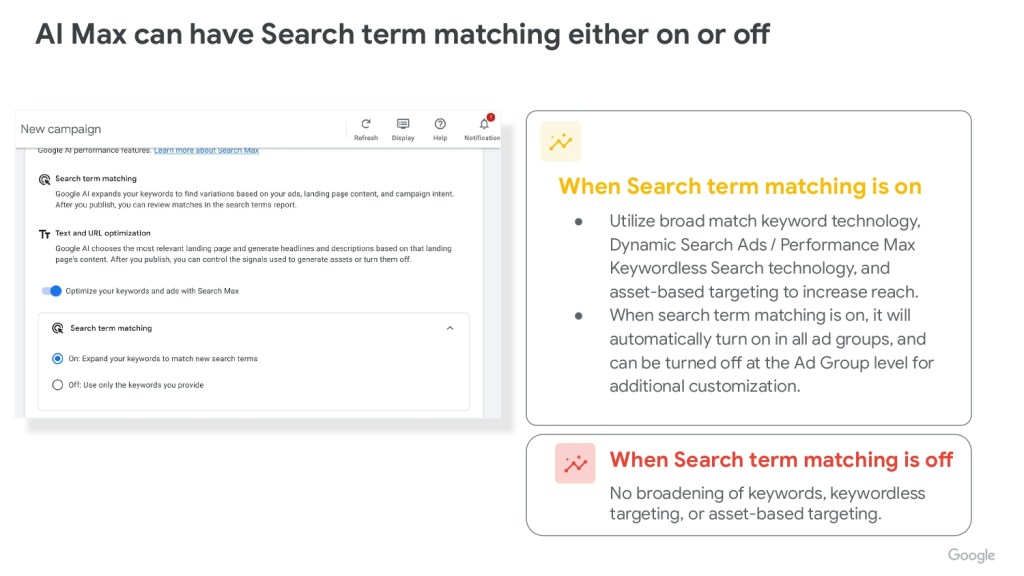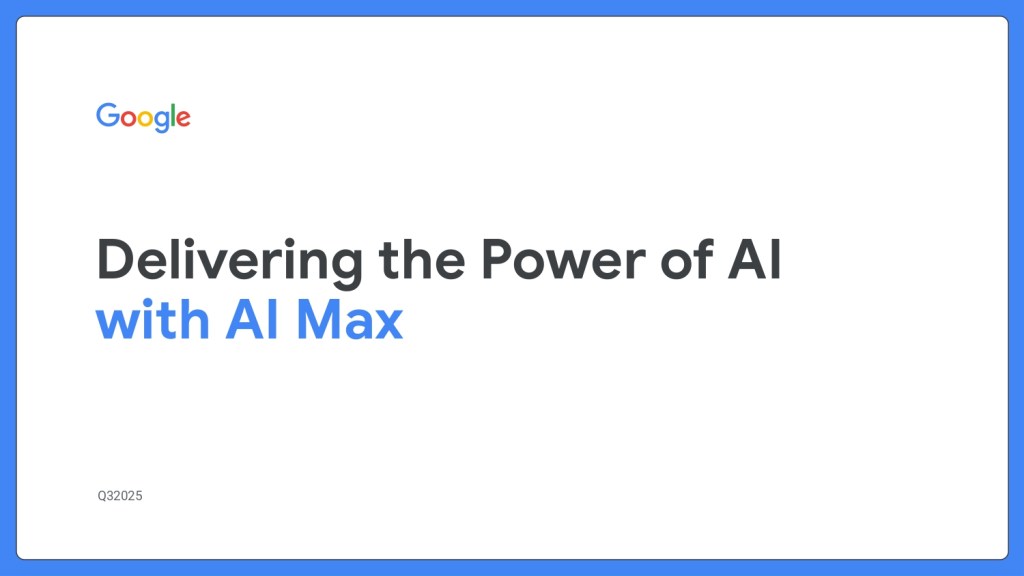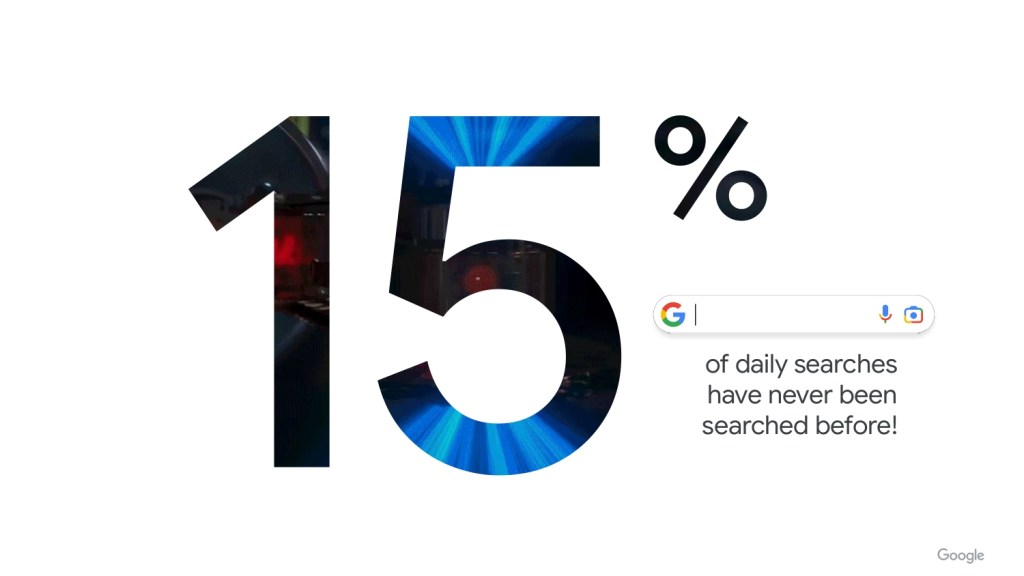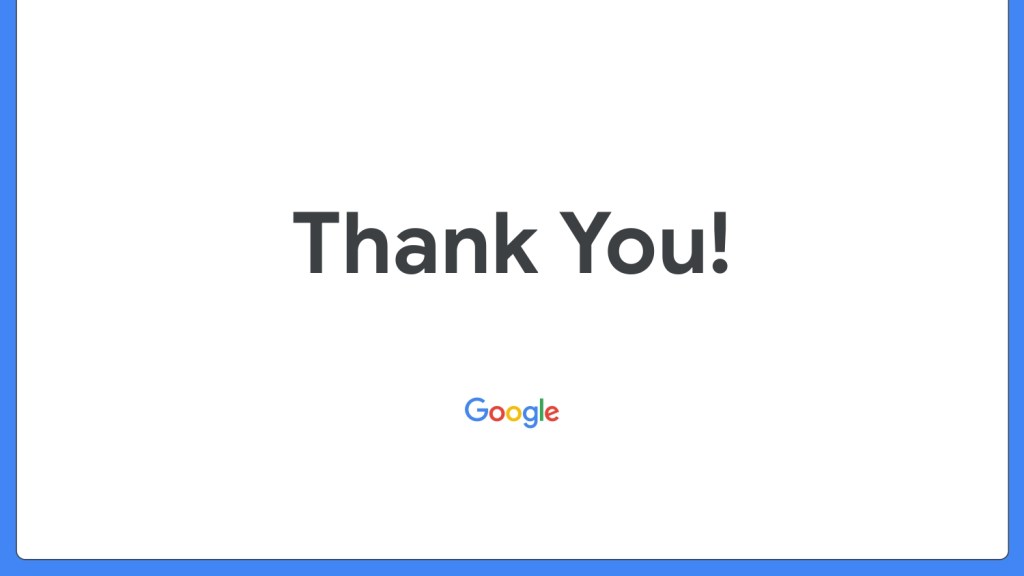Save 50% on a 3-month Digiday+ membership. Ends Dec 12.
Pitch deck: Why Google believes its latest AI Max product is a game changer for search campaigns

This article is part of an ongoing series for Digiday+ members to gain access to how platforms and brands are pitching advertisers. More from the series →
Google’s AI ambitions are moving fast, and the old architecture of search advertising is starting to show its age. As user behavior shifts toward more conversational, visual queries, the need for automation is growing. But automation comes at a cost: marketers still want control. Google’s latest update — with AI Max — is an attempt to square the circle.
Rolling out this summer, this suite of ad tools is Google’s latest effort to thread the needle, letting automation do more without cutting marketers out of the process. Unlike Performance Max — Google’s full-throttle, AI-everywhere product — AI Max is being positioned as a more flexible tool, giving advertisers more say in where and how AI shows up in their campaigns.
If that sounds like a lot of nuance, that’s because it is. Google’s trying to thread a needle — more AI but on marketers’ terms, according to the pitch deck Google is using to sell that premise to advertisers.
What is AI Max?
Announced in May and in beta globally since, AI Max (or AI Search Max) is a suite of targeting and creative tools powered by AI, which aim to improve results for advertisers’ search campaigns. Or as Google itself put it: the product is a “new, one-click feature suite — AI Max for search campaigns.”
What can it do?
AI Max can match ads to relevant searches — even those which advertisers haven’t bid on, customize ad copy based on user intent as well as automatically send users to a brand’s landing page. And it does all this via its two settings:
Search term matching: This lets advertisers expand their existing keywords using a broad match and keyword-less technology. Not only will advertisers be able to search for their specific keywords, the AI tools will also pick up anything that’s similar, or relevant that they might not have thought of, therefore opening up their options to more search queries and conversions from even more consumers they may not have got in front of previously. But this doesn’t replace keyword targeting — this function is strictly to complement and be additive.
Text and URL optimization: This setting combines text customization — (previously called “automatically created assets”) which generates things like headlines and descriptions based on an advertiser’s landing page, ads and keywords — with final URL expansion, which sends users to the most relevant pages of a brand’s website.
Why should advertisers use this?
According to Google, this is the best of both worlds: more automation and less manual work, but with more results and oversights — or as the deck put it: better performance, more control and more transparency. So a slightly different pitch to the traditional Performance Max product which has often been dubbed an AI black box for its lack of transparency.
Jeremy Hull, chief product officer at Brainlabs said he experienced a demo of the product and spoke with one of the developers a few weeks later at Google Marketing Live. In doing so, it became apparent that AI Max incorporates all of Google’s improvements to its AI suite of ad products, including advanced controls and transparency, he said.
“It’s very clear Google has listened to advertiser feedback over the past few years about Performance Max and other AI ads features, and I’m really impressed by how robust and flexible AI Max already is,” Hull said.
Moreover, Enders Analysis’ senior research analyst Claire Holubowskyj said she still believes Google’s promise of a new reporting line showing the impact of AI Max is little better than other black box reporting.
“While useful to identify an impact, the ‘how’ and ‘why’ have always been the more interesting (and difficult to identify) insights,” she said.
In Holubowskyj’s view, Google is providing the base level of visibility necessary in AI Max to build trust in the system among marketers. “But part of widespread AI adoption will be trusting the outputs and ceding limited control in some areas — the key questions are which areas, and how much oversight is required?,” she continued.
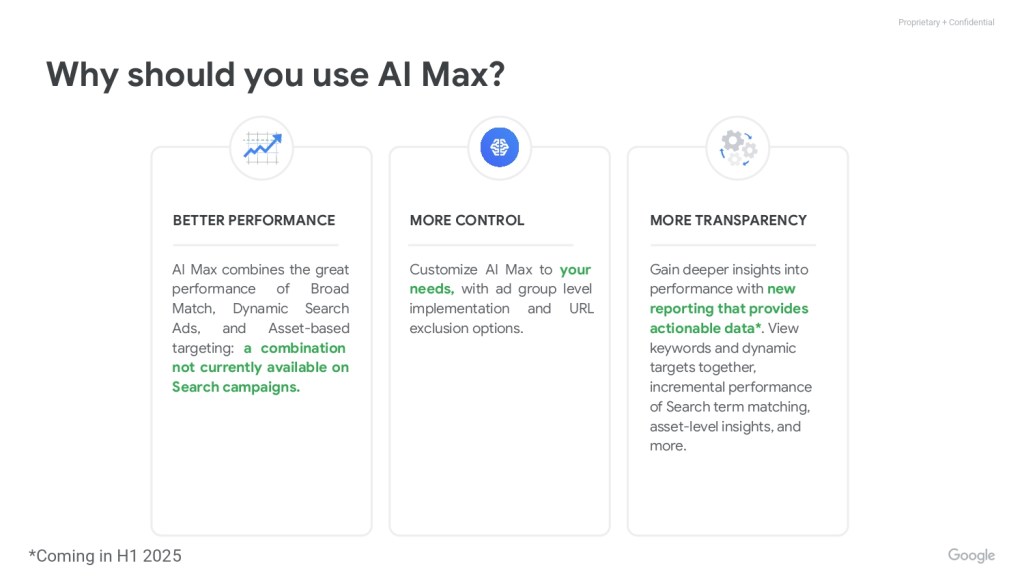
With AI Search Max, advertisers have the ability to opt out of text customization or URL expansion at the campaign level, as well as opt out of search term matching at the group level. While there is the option to pick and choose which settings you want, Google will always encourage advertisers to turn on all functionalities for better performance — just the way that using all options in Performance Max promises the best results — because this combination isn’t actually available on traditional search campaigns.
Google’s May announcement suggested that those advertisers who activate AI Max in search will typically see “14% more conversions or conversion value at a similar CPA/ROAS,” while for those who mostly use exact and phrase keywords “the typical uplift is even higher at 27%.”
While the deck itself shows how AI Max looks depending on each toggle used, Google’s initial announcement highlighted L’Oreal and MyConnect as brands that had already tested the product suite.
According to the announcement, L’Oreal aimed to find new search opportunities and boost ad relevance in their search campaigns. By using AI Max, the beauty brand saw a 2 times higher conversion rate at a 31% lower cost-per-conversion (CPC) — though no specific figures were shared.
Similarly, Australian-based utility connection service company MyConnect had used Google’s AI-powered search features like target ROAS bidding and broad match. The brand drove 16% more leads, at a 13% lower cost-per-action (CPA) and saw a 30% increase in conversions from new queries, which has led to them using AI Max for more search campaigns. Though again, no specific figures were shared.
Click through the below slides to view the full deck:
More in Marketing

In Graphic Detail: Here’s what the creator economy is expected to look like in 2026
Digiday has charted its expected revenue, key platforms for creator content as well as what types of creators brands want to work with.

Ulta, Best Buy and Adidas dominate AI holiday shopping mentions
The brands that are seeing the biggest boost from this shift in consumer behavior are some of the biggest retailers.

Future of Marketing Briefing: AI confuses marketers but their own uncertainty runs deeper
That was the undercurrent at this week’s Digiday Programmatic Marketing Summit in New Orleans.
